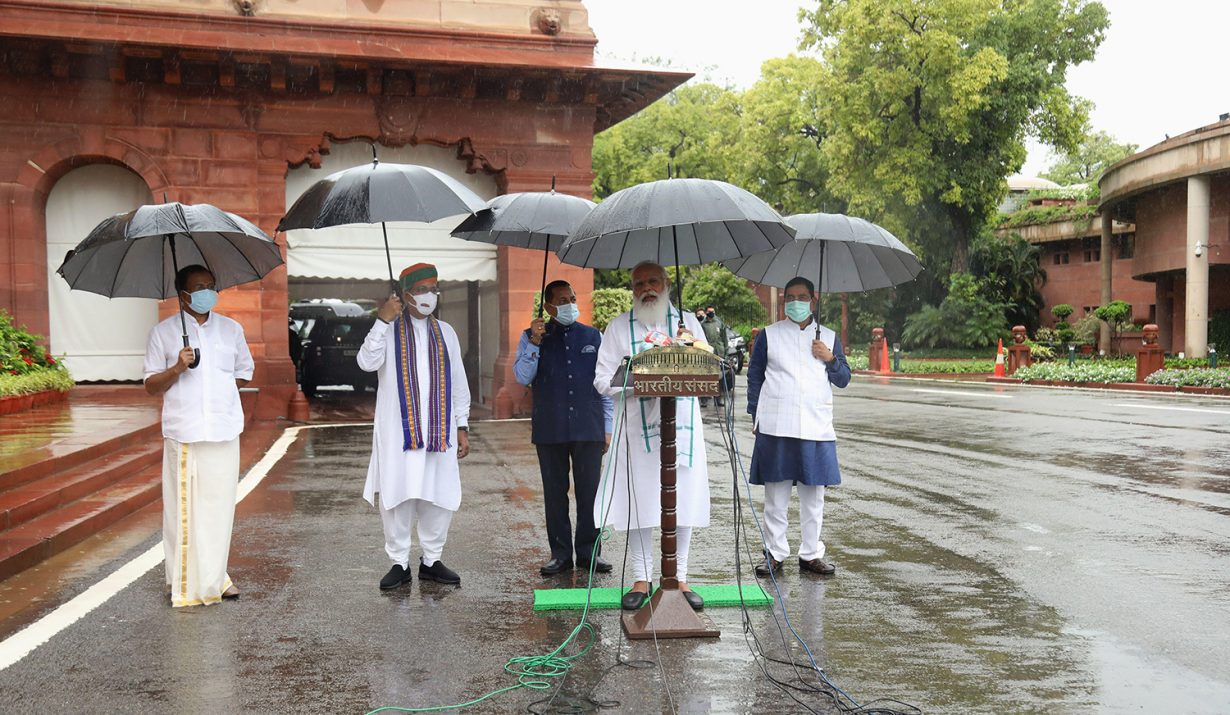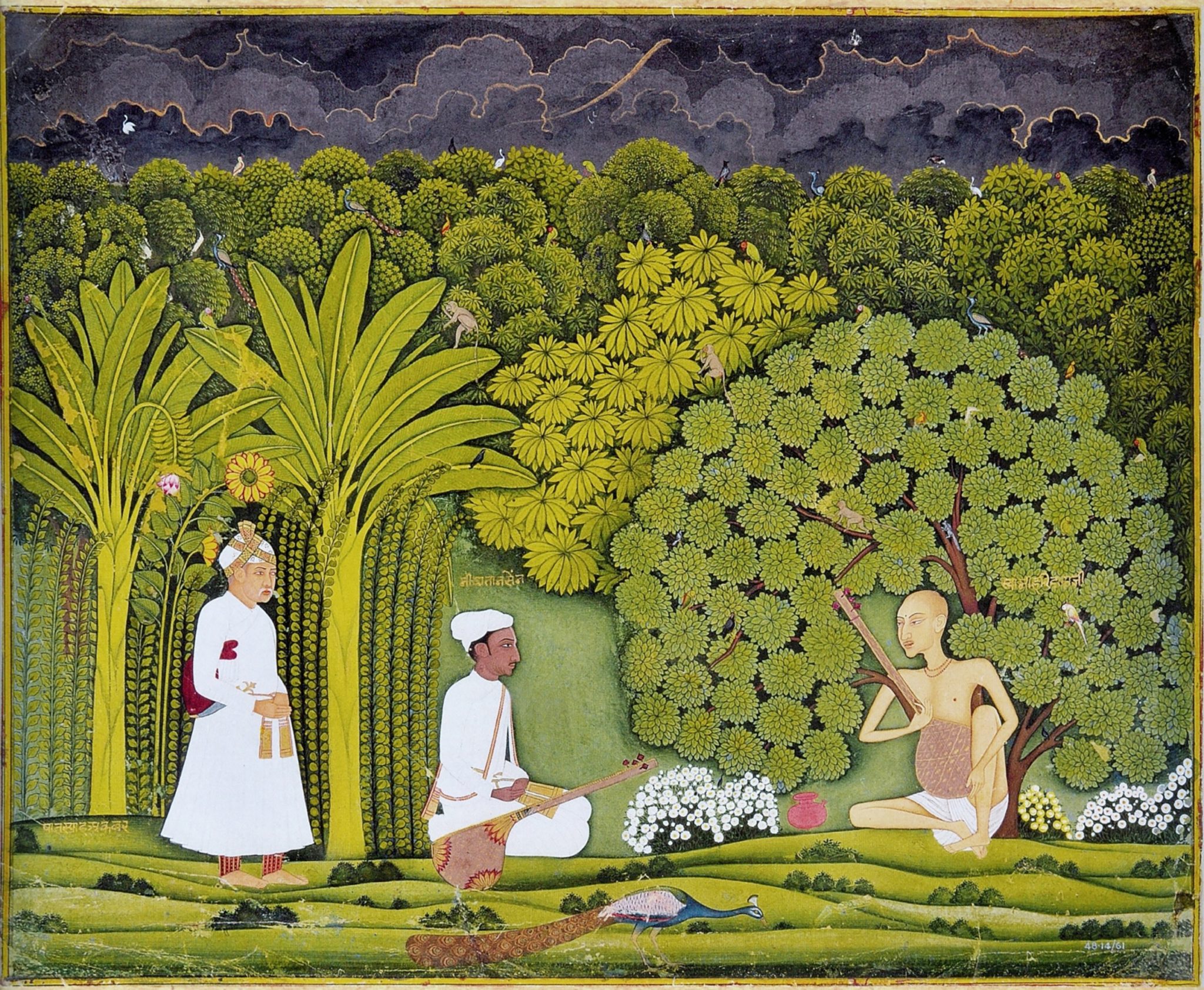Giver of life and song, destroyer of politicians – nowhere else perhaps is there as much pressure on a natural phenomenon to perform well
‘Rain, rain go away / Come again another day’ is a seventeenth-century rhyme still taught in Indian kindergartens to children beginning their education in English. One of many similar follies in a curriculum still suffering a lingering colonial hangover, the message in the ditty conveys the exact opposite of what the rains really mean to life in the subcontinent. Here, and in so much of the rest of Asia, we don’t quite relate to the Western world’s eager wait for every summer. Our countdown to a change in season anticipates, instead, the monsoon. It is the rain that invigorates us: it marks, after the brutal heat and humidity of tropical summer, the revival of life, perfumed by the terpenes in petrichor.
The Indian monsoon, technically the Asian monsoon, is one of the largest, and the most complicated, weather systems in the world, affecting about half the global population before it finishes its annual journey across several climate zones. As a sentimental theme, the monsoon has reigned over creative efforts in India for centuries, and continues to inspire some of the best-known poetry, music, dance, drama and art that exists in the country today.
Legend has it that the musician Tansen, one of nine ‘gems’ (or Navaratnas) in the court of the Mughal emperor Akbar, could cause a downpour when he sang the Raag Malhar, his composition for rain. Miniature paintings in the Mughal, Rajasthani and Pahari styles all used weather to set the scene for sensuality, pleasures and other romantic interludes. Kings in the drier northwestern states of India would construct monsoon pavilions for their viewing pleasures. Older still, Kalidasa, among the greatest of Classical Sanskrit poets, in approximately the fifth century CE, wrote Ritusamharam, cantos paying homage to the six seasons of ancient India – summer, monsoon, autumn, onset of winter, winter and spring. Emotions during the monsoon evoked some of his best lines: The earth – covered with sprouting grass / gleaming like crushed emeralds, / and a new growth of plantain trees / with scarlet beetles upon them – / now does shine, like a lovely girl / in colourful jewels adorned (translated by A. N. D. Haksar in the book Ritusamharam – A Gathering of Seasons, 2018). Elsewhere, the monsoon winds opened flourishing trade routes between Arabia and Greece to Malabar’s ancient Muziris port, in more recent centuries bringing in what would become the East India Company, and with that the colonisation of India. For all the extreme romanticism associated with the rains, the season is volatile, given to extremities, both in terms of the natural forces it unleashes and in the way it is, even today, politicised by both state and central governments.

The tropical summers in the country are invariably brutal, made worse every passing year by heatwaves, rising temperatures, water shortages and the sometimes violent conflicts that come with them. The heat builds up swiftly over April and May, and the tension between the dry months and the anticipation of relief is palpable to those of us who endure it each year. Save for an abundance of mangoes, there is little to savour during this time. Thus, when the first rains fall, they break over oppressively windless days, and often seem to express a satisfyingly large sigh of relief on behalf of the inhabitants of this by-now parched country. More importantly, the rains are singularly responsible for the quality and quantity of the following year’s harvest, matters crucial for an economy and social structure still heavily dependent on agriculture. The state of the rains in a particular year goes on to determine policy decisions, budget allotments for various sectors and the cost of everyday food in farmers markets.
In a good year, the southwest monsoon (so named for the direction from which the rain winds blow) initially gathers around the Andaman and Nicobar Islands by late May and makes landfall in southern Kerala, its first port of call on the mainland, on 1 June. The official announcement of onset – following the convergence of several complicated predetermined conditions across weather stations – by the Indian Meteorological Department (IMD) is treated, perhaps rightly so, as a solemn event by the media. For the papers, this weather season is always frontpage news. Within days, the monsoon travels up the western coast and covers the whole of the country by late July or early August.

on the first day of the Monsoon Session of Parliament 2021 at the Parliament House. © and photo: Naveen Sharma/SOPA Images via ZUMA Press Wire
It is hard to overstate just how much the monsoon affects every aspect of sociopolitical life in India. Nowhere else perhaps is there as much pressure on a natural phenomenon to perform well as there is on the monsoon in India. A deficit monsoon can overhaul the results of elections and send the Sensex into a freefall, while a normal or robust season is conveniently viewed as a mandate for a particular political party. For instance, the above normal monsoon in 2019, a month into the Narendra Modi-led rightwing government’s second term in power, helped boost his already popular image among farmers, the largest vote-bank in the country. It is little wonder, then, that the monsoon has long ceased to be a subject of prosaic conversation about weather in the country, and is used instead as a potent political tool. Weather reports released by IMD are – unofficially of course – under the strict control of various governments. Given that no political party in power wants a drought or famine on its record, less than satisfactory rains can be underreported, or the upward progress of the monsoon winds hastened to keep stock markets from crashing. While there is no overt censorship of data – yet – in the mainstream national media, it is in the regional media, over anecdotal exchanging of information and combing private documentation on social-media accounts, that the true health of a year’s monsoon can be determined.
Such politicking over the weather has hardly been harmless. For instance, less than true reports of good rains and dams filling up as per normal can, and in the past have, ignited water wars between Karnataka and the neighbouring state of Tamil Nadu. The Cauvery water dispute is a complicated, century-old fight over sharing waters of the river of that name – the lifeline for farmers in both states – between the higher plateaued Karnataka, where the river originates, and the lower-lying regions of Tamil Nadu. As I write this, the latter is set to add a fresh layer to the ongoing tussle with plans to build a dam in Mekedatu, a village at the border of the two states. Tamil Nadu fears the dam would change the terms and conditions of the existing sharing agreement. Closer to my home, when delayed and deficit rains go unrecognised, as has often been the case in Kodagu, a district known for abundant, infuriatingly long monsoons, state budgets can be set to ignore crop failures, fair allocation of crop support and allowances for possible droughts. If and when such realities are shoved under proverbial carpets in more villages and districts across the country under the guise of political manoeuvring, we end up in a country that fails to acknowledge the woes of its biggest demographic.
The monsoon remains replete in music – like in the iconic Ab Ke Sawan Aise Barse (“In this sawan month, the way the rains fall…”) by Hindustani vocalist Shubha Mudgal, a song that reiterates every romanticised notion of the first rains, poetry and literature. But as it gathers steam and speeds across the country, the rain habitually cause floods and destruction in many states. By the time the monsoon withdraws from the subcontinent, it is a mixed bag of the incidents it leaves behind – perhaps a good year for the farmer, a changed fate for the politician, some destruction, some succour.
